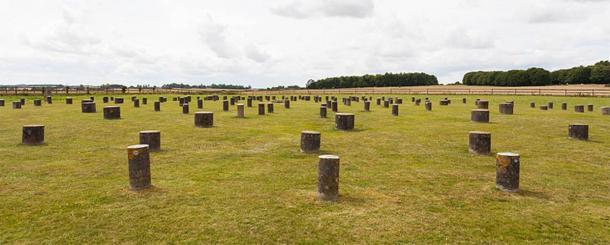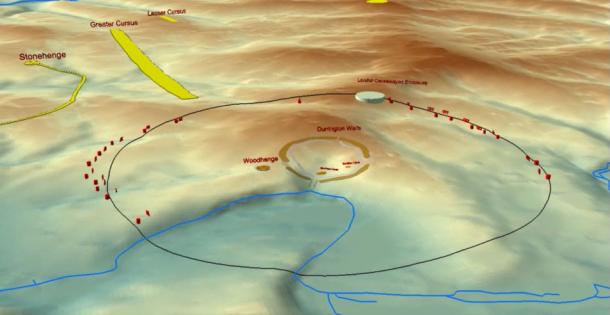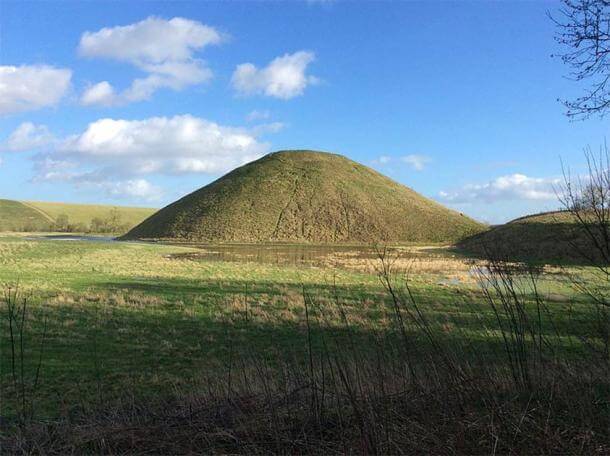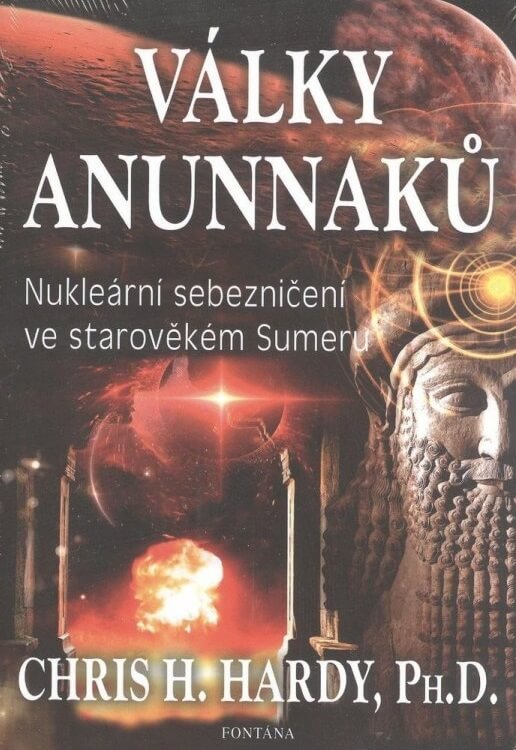
The shafts near Stonehenge form a sacred circle
 16. 07. 2020
16. 07. 2020

British archaeologists have made a surprising discovery near Stonehenge. Near this famous Neolithic site, they discovered the presence of a massive circular structure. It is perhaps the largest Neolithic monument found in the British Isles that shifts our understanding of Britain's ancient population.
An exceptional Neolithic circle
A team of experts from several universities collaborated on a project called the Stonehenge Hidden Landscape Project.

The previously discovered 'Woodhenge' near Durrington Walls is tiny compared to the newly discovered monument.
They used the latest technology, thanks to which they came across an amazing discovery at a distance of about 3,2 km from Stonehenge. Experts used georadar and magnetometry to identify underground anomalies. Tim Kinnaird, who was part of the team, said: "Using optically stimulated luminescence and dating, we can write a detailed story of the landscape around Stonehenge up to 4000 years ago." To their surprise, they found 20 deep shafts forming a circle, which covered an area of 2 km.
These shafts filled with soil are more than 10 m deep and 5 m wide. Based on the samples obtained from them, it is possible to determine their age at 4500 years. Archaeologists were surprised by this finding, as the area around Stonehenge has been studied in great detail in the past. At the center of this circle is the Durrington Walls, a massive henge, one of the largest of its kind in Western Europe. Archaeological remains suggest that there was a large settlement, whose inhabitants were the builders of Stonehenge, but it was also an important ritual and ceremonial place.
A new sacred place of the Stone Age
Researchers wrote for Internet Archeology: "The degree of similarity between all 20 objects suggests that they may have been part of a circle of large pits around Durrington Walls." its center. The circular building could also surround the Neolithic enclosure at Larkhill. Professor Vincent Gaffney, the archaeologist who took part in the project, told the Guardian: "This is an unprecedented finding of great importance in the United Kingdom."

Visualization showing the landscape around the Durrington Pit cluster, significant monuments, and the average distance from the Durrington Walls represented by the line. Source: Internet Archeology
During subsequent investigations, archaeologists concluded that there could be another 10 shafts and that 30% of the site was lost due to modern construction activities. However, there is also evidence that the site was "maintained until the Middle Bronze Age."
The relation of the new Neolithic circle to Stonehenge
The size of the shafts makes this discovery very significant, also because nothing similar has yet been found. According to Gaffney, it is possible to believe that the circular structure demonstrates "the ability and desire of Neolithic society to record its cosmology in a way and to an extent that we did not anticipate before."
According to certain theories, nearby Stonehenge was associated with the movement of the Sun, and the newly discovered structure represents "a tremendous expression of cosmology and the need to imprint it on the earth itself," Gaffney told The Guardian. The newly discovered circular structure gave experts the opportunity to look at Durrington Walls in a new way. It seems that while Stonehenge was associated with the dead, the Durrington Walls were associated with the living and the natural world. It is probable that this building reflected the relationship between people and nature and was related to the rituals and ceremonies of the Stone Age. Dr. Richard Bates, who was part of the team, told 7 News that "these complex practices prove that these people have been attuned to natural phenomena to an extent we cannot even imagine in today's world."
The company of the Stone Age was more complicated than we thought
The sheer size of this site surprised the experts, as it took a huge amount of time, work and organizational skills to create such a monument. Moreover, the plan of this circular structure suggests that the Neolithic people who built it were able to count and perhaps even mastered arithmetic. Dr Bates told The Independent that the discovery "reveals an even more complex society than we have ever imagined." It offers us a new perspective on the Neolithic people of Britain. Dr. Nick Snashall, an archaeologist with the English National Trust for The Independent, said that "this breathtaking discovery offers a new perspective on the life and faith of our Neolithic ancestors."

Silbury Hill: a monumental Neolithic mound located west of the Kenneta River south of the village of Avebury
This new discovery is extremely significant because it also provides data on the natural environment in which Neolithic people lived. Dr. Kinnaird explained to Nine News that "the filling of the objects contains a rich and fascinating archive containing new information about the natural environment." This can help to understand the way of life and society of the Stonehenge builders and quite possibly their ultimate destiny.
Tips from the Sueneé Universe e-shop
Chris H. Hardy: The War of the Anunnakes
Sumerian Empire was destroyed because of wars between people and gods who did not hesitate to use in their struggles nuclear weapons. One piece of evidence is to be found radioactive skeleton or content of Sumerian clay tables.

Chris H. Hardy: The War of the Anunnakes





 1
1
